|
 Secure Site
Secure Site
|
 |
Archive for the 'yoga' Category
 Guided Meditation Practice limitless awareness and let yourself be as infinite as the heavens.
This is the third guided meditation in a series that started two days ago:
Turn your attention from the surface of the lake toward the sky itself. Then imagine shifting your gaze from the reflections, the passing phenomena, to the sky within which they all arise and pass away. The sky is boundless, limitless. It contains everything that arises. The horizon is only a perceptual or conceptual boundary that can never be reached. Even on the cloudiest day, the sky is luminous above the clouds, pervasive, limitless, and free.
Awareness has the qualities of luminosity and limitlessness. It is present always, behind, between, and beyond all the ever-changing phenomena. Whenever you catch yourself identifying with the mental “clouds,” simply shift your identification from the clouds to the sky itself. Realize that what you’ve been seeking is what you already are and have always been! Big Sky Mind opens us to seeing that our true nature is this awareness within which all experience arises and passes away.
adapted from Yoga Journal by Frank Jude Boccio
Although meditation can be done in almost any context, practitioners usually employ a quiet, tranquil space, a meditation cushion or bench, and some kind of timing device to time the meditation session. Ideally, the more these accoutrements can be integrated the better. Thus, it is conducive to a satisfying meditation practice to have a timer or clock that is tranquil and beautiful. Using a kitchen timer or beeper watch is less than ideal.
And it was with these considerations in mind that we designed our digital Zen Alarm Clock and practice timer. This unique “Zen Clock” features a long-resonating acoustic chime that brings the meditation session to a gradual close, preserving the environment of stillness while also acting as an effective time signal.
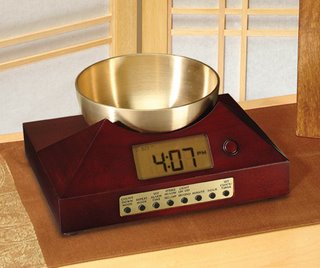 Meditation Timer with Tibetan Bowl Now & Zen – The Meditation Timer Store
1638 Pearl Street
Boulder, CO 80302
(800) 779-6383
Posted in yoga, Yoga Timer, Yoga Timers by Now & Zen
 yoga Yoga can be a powerful healing tool for overcoming back pain. But there are times when your practice can do more harm than good. “Too often, students don’t back off a pose until there’s pain,” says Jamie Elmer, a yoga instructor in Boulder, Colorado. “Hurting even just alittle bit is a sign that you have to change something.” Elmer challenges students to answer this question: Why are you coming to yoga? “Are you coming for a distraction from something else? That’s what TV is for. A yoga practice without mindfulness can lead to injury quickly.”
If you have a history of lower back pain, keep these do’s and don’ts in mind when you practice, says Elmer:
DO vary the intensity of your practice. “If we do anything repetitively, day after day, and we haven’t built up the internal strength for that activity, the body won’t be ready for it, and injury will result,” says Elmer. Like any type of exercise, mix up the style of yoga you practice. If you do a vigorous, Ashtanga class one day, seek out a more meditative and calming class the next, so you’re not repeating strenuous movements too often.
DON’T go into any pose to your fullest range of motion. “When you’re in that kind of extreme, you’re not using muscle control,” she says. The result? Risky joint compression in your hips, knees, and spine.
DO use your abdominal muscles and bend your knees when going into a forward bend to prevent overstretching in your lower back.
DO use your abs and keep your legs strong in back-bending poses, including cobra and upward-facing dog.
DON’T twist with a rounded spine. “More important than how deeply you can twist is how long your spine is when you do,” says Elmer.
adapted from Natural Solutions, October 2009
Use our unique “Zen Clock” which functions as a Yoga Timer. It features a long-resonating acoustic chime that brings your meditation or yoga session to a gradual close, preserving the environment of stillness while also acting as an effective time signal. Our Yoga Timer & Clock can be programmed to chime at the end of the meditation or yoga session or periodically throughout the session as a kind of sonic yantra. The beauty and functionality of the Zen Clock/Timer makes it a meditation tool that can actually help you “make time” for meditation in your life. Bring yourself back to balance.
 Yoga Timers with gentle chimes Now & Zen – The Zen Timer and Alarm Clock Store
1638 Pearl Street
Boulder, CO 80302
(800) 779-6383
Posted in yoga, Yoga Timer, Yoga Timers by Now & Zen
Research published in the last two years shows that certain slow activities–like gentle yoga or gardening–can reduce your stress level and blood pressure and improve your body’s ability to regulate sugar. Past studies have shown that other habits like meditation can help reduce chronic pain and enhance mental clarity. The first step to finding “slowness”is to clear some room in your life–watch less TV or spend less time browsing at the mall. “Jettison the clutter that clogs up your schedule,” says Carl Honoré, author of In Praise of Slowness (HarperOne, 2004). “When you focus on the things that are important at work or at home you can enjoy those things more,”he says. You can also take a more relaxed approach to the things you already do and adopt new habits that require mindfulness. “It’s one thing to say you’re going to slow down, but a slow hobby helps you put those words into practice,” says Honoré. To get you started we’ve come up with seven ways to destress and reenergize.
 gardening is a great mindfulness practice that cultivates stillness of mind 1. Become a Gardener
Caring for flowering plants may help you relax and get grounded. In 2004, researchers at Japan’s Utsunomiya University found repotting plants lowered fatigue and promoted physiological relaxation in study participants, and that working with flowers seemed to have a stronger positive effect than working with nonflowering plants.
HEALTH BENEFITS Research shows that exposure to plants–and even just looking at them–can reduce blood pressure, increase concentration and productivity, and help you recover from illness, says Andy Kaufman, Ph.D., assistant professor of tropical plant and soil sciences at the University of Hawaii in Honolulu. He cites a classic 1984 study, published in Science, which showed that even the view of a green garden helped surgical patients recovering from gall bladder surgery. Among a group of 46 patients in a Pennsylvania hospital, the 23 who had rooms with windows facing greenery had shorter postoperative stays and needed fewer pain–relieving analgesics than the 23 whose windows faced a brick wall.
GETTING STARTED If you live in an apartment or don’t have much room to garden, invest in the EarthBox (earthbox.com), a self–watering container garden that comes with potting soil and fertilizer. “Even if you have a brown thumb, you can grow things [in it],”says David Ellis, American Horticulture Society spokesperson. You could also join a community garden; visit ahs.org, the American Horticulture Society’s website, for more info.
 yoga helps to slow us down 2. Practice Slow Yoga
Slow yoga emphasizes one drawn–out breath for each movement you make. Like tai chi, it uses many repetitive flowing moves. “When you practice slow yoga, you create more awareness between mind and body,”says Beth Shaw, founder of Yoga Fit Training Systems in Los Angeles. This creates a deep sense of stillness and helps develop patience and lower stress, she adds.
HEALTH BENEFITS Last year, researchers in Sweden and India showed that practicing yoga can reverse the negative effects of high blood pressure, obesity, and high blood sugar. The studies, published in the journal Diabetes Research and Clinical Practice, showed reduced waist circumference, blood pressure, blood sugar, and triglycerides (the chemical form of fat cells) and higher HDL (so–called good cholesterol) levels in a control group that practiced yoga versus a placebo group.
GETTING STARTED To find a Slow Yoga class near you visit yogafit.com or inquire at your local yoga studio. You might also consider restorative or yin yoga, two other gentle forms of the practice.
 Take a nap 3. Take a Nap
You snooze, you win, according to a Harvard study published last year in The Archives of Internal Medicine. Researchers revealed that people who regularly napped at least three times a week for an average of 30 minutes had a 37 percent lower risk of heart attack than those who didn’t nap. “It shows that napping is an important preventive strategy just like regular exercise, eating right, and not smoking,”says Sara C. Mednick, Ph.D., author of Take a Nap! Change Your Life (Workman, 2006).
HEALTH BENEFITS A daily nap also boosts serotonin, says Mednick, which may lead to improved memory and performance. Napping can even contribute to weight loss, according to a study in the American Journal of Physiology, Endocrinology, and Metabolism in 2007. That study looked at hormone levels in 41 men and women who were part of a seven–day sleep–deprivation experiment. Those allowed to nap for two hours following a night without any sleep showed a significant drop in cortisol, a hormone related to high levels of stress, and a complement of growth hormone, which helps regulate insulin and fat storage. Researchers concluded that a midafternoon nap improves alertness and performance and reverses the negative metabolic effects of sleep loss.
GETTING STARTED The best time to nap is between 1 p.m. and 3 p.m., but a 15– to 20–minute power nap at any time can help. Set your Zen Alarm Clock for 20 minutes. Close the office door and take a snooze, or find a quiet place where you feel safe. Nap on weekends, Mednick says. “Just don’t use the weekend to catch up on sleep lost in the week.”Check with your doctor about napping if you’re being treated for insomnia.
4. Start a Slow Hobby
 learning to paint Hobbies that require mindful, solitary activity–such as knitting, painting, sculpting, crocheting, or quilting–can act as a brake on your hectic pace.
HEALTH BENEFITS “Slow hobbies help you cultivate the lost art of concentration and being in the moment. They have a meditative quality to them,”says author Carl Honorè. “And that calming effect goes beyond the act itself. Maintaining that inner stillness enables you to negotiate the fast–moving waters of the rest of your day.”
GETTING STARTED Sixty–four percent of people who knit or crochet say they use these crafts to help them reduce stress and relax, according to the Craft Yarn Council of America. Visit craftyarncouncil.com for information. To learn about drawing, visit drawspace.com. Check with a local college or community center for other craft classes.
5. Eat Slowly
Eating too fast creates stress in the body, says nutritionist Marc David, author of The Slow Down Diet (Healing Arts Press, 2005). That causes a spike in cortisol and insulin, which in turn diminishes your ability to burn calories and makes you more likely to gain weight. Eating quickly also leads to overeating. “The brain demands more food if it doesn’t have time to register its needs for taste, aroma, and satisfaction,”says David.
HEALTH BENEFITS Taking time to eat creates a relaxation response, which means you’ll have fewer digestive complaints and your body will be able to take in the nutrients it needs. Plus “we make better food choices, and we know when to stop,”he adds.
GETTING STARTED To ease the pace, double the time you spend on your meals; for example, if you usually eat breakfast in five minutes, stretch it out to ten. “Focus on your food: Taste it, enjoy it, notice it, savor it,”says David. “Find relaxed time between bites by slowing down your internal conversation. Let go of any sense of urgency, and allow the moment to be sensual.”The cooking process can help you slow down too, says David. “Instead of microwaving something, make a soup from scratch.”
6. Do One Thing at a Time
A lot of us believe we get more done by multitasking. But research at the University of Michigan published in the Journal of Experimental Psychology in 2001, shows the opposite is true. “If you concentrate on one task at a time, you get more done faster and make fewer mistakes,” says David E. Meyer, director of the Brain, Cognition, and Action Laboratory at the University of Michigan.
HEALTH BENEFITS Taking on chores one at a time reduces chronic stress and protects your short–term memory, which comes under fire if the brain is overtaxed.
GETTING STARTED To curb outside distractions and focus better, set aside time when you can concentrate on one activity from start to finish. For example, check e–mail once an hour and turn off your instant messaging; let your phone messages go to voice mail and only check them occasionally throughout the day.
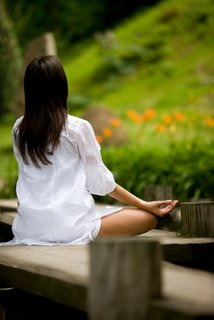 practice meditation in order to slow down 7. Meditate
“Meditation teaches us to focus,”says Steven Hartman, director of professional training at the Kripalu Health and Yoga Center (kripalu.org) in Stockbridge, Mass. “All day your mind is chattering. When you meditate, you can hear your own inner wisdom.”
HEALTH BENEFITS Studies have shown that practicing meditation also improves blood pressure, fortifies the immune system, and promotes a sense of well–being. “A daily meditation practice can bring body, breath, mind, and spirit into balance,”says Hartman.
GETTING STARTED Check out a program like Transcendental Meditation. (See tm.org.) Or begin at home: “Put an egg timer on and stay with your breath for just two and a half minutes,”says Hartman. “Keep your spine tall and straight and allow the breath to be natural.”If you’re seated on the floor, a cushion can raise your pelvis and bring your spine into a natural position. As you get comfortable with the practice, you can increase your time to 15 or 30 minutes a day.
adapted from Natural Health Magazine, by Chrystle Fiedler
One of the ultimate Zen like experiences is waking-up from a great slumber refreshed and energized. Your mind and body are harmoniously one, both alert and focused. Having a refreshed mind and body are two keys to a natural and Zen lifestyle. Waking up in the morning should not be a loud and abrupt awakening, but rather it should be a peaceful positive experience. The right natural alarm clock can transition your deep and tranquil sleep into a serene start to consciousness. Imagine a long-resonating Tibetan bell-like chime waking you up to a beautiful morning experience.
The right alarm clock can be the most beneficial investment for you. With our Now & Zen natural alarm clock you are awakened more gradually and thus more naturally. Now & Zen is focused on creating a naturalistic lifestyle, and our clocks are an example of our philosophy.
 Zen Meditation Timers with Soothing Chime Now & Zen – Soothing Chime Alarm Clock & Timer Store
1638 Pearl Street
Boulder, CO 80302
(800) 779-6383
Posted in Chime Alarm Clocks, intention, Meditation Timers, Meditation Tools, mindfulness practice, Natural Awakening, Now & Zen Alarm Clocks, sleep, Sleep Habits, wake up alarm clock, Well-being, yoga, Yoga Timer, Yoga Timers by Now & Zen, Zen Alarm Clock, Zen Timers
 namaste lady This is the season for turning inward—darkness surpasses light, animals begin to hibernate, and the natural world quiets down in preparation for the months ahead. Your practice can benefit when you align with the changing seasons. Take a break from striving on your mat by trying a forward-bending practice. “Forward bends are, by their nature, introspective and meditative,” says Boston teacher Barbara Benagh, who designed the sequence that begins on page 66. “Forward bends are calming to the nerves, soothing, and grounding. These poses teach us that yoga is as much about surrender as effort, if not more so.”
Benagh’s practice begins with reclining hip openers to relax your back muscles and warm your hip joints. From there, her sequence moves into seated forward bends that emphasize a passive stretch of the back muscles while providing a gentle abdominal massage. Set your Zen Timer for 5 inutes. Hold each pose for up to five minutes to give your muscles time to relax and your breath a chance to deepen. Also, be sure to practice asymmetrical poses such as Ardha Ananda Balasana (Half Happy Baby Pose) and Janu Sirsasana (Head-of-the-Knee Pose) on both sides before moving on.
A willingness to surrender is your greatest ally in forward bends, helping to quiet the mind and to release the stiffness that is an obstacle to enjoying the poses. In the spirit of introspection, be more curious about the process than the destination.
adapted from Yoga Journal, by Elizabeth Winter with Barbara Benagh
Use our unique “Zen Clock” which functions as a Yoga & Meditation Timer. It features a long-resonating acoustic chime that brings your meditation or yoga session to a gradual close, preserving the environment of stillness while also acting as an effective time signal. Our Yoga Timer & Clock can be programmed to chime at the end of the meditation or yoga session or periodically throughout the session as a kind of sonic yantra. The beauty and functionality of the Zen Clock/Timer makes it a meditation tool that can actually help you “make time” for meditation in your life. Bring yourself back to balance.
 gentle wake up clock with chime, meditation timers Now & Zen – The Yoga Timer Shop
1638 Pearl Street
Boulder, CO 80302
(800) 779-6383
Posted in yoga, Yoga Timer, Yoga Timers by Now & Zen
 Meditation Calms the Mind What It Does
Quiets your mind and hones your focus so you are fully present in this workout. Because the solar plexus is associated with the third chakra, you focus on the color yellow, which is linked to this energy center of the body and believed to inspire confidence, will, and personal power.
How to Do It
Lie back in Corpse pose, palms facing up. Picture a yellow flower, its petals fully open, at your solar plexus. With eyes closed, imagine it floating up with each inhalation and down with each exhalation, riding a slow, gentle wave. Set your Meditation Timer for 5 minutes. Focus on your breath and the flower for two to five minutes.
adapted from Body + Soul
Use our unique “Zen Clock” which functions as a Yoga & Meditation Timer. It features a long-resonating acoustic chime that brings your meditation or yoga session to a gradual close, preserving the environment of stillness while also acting as an effective time signal. Our Yoga Timer & Clock can be programmed to chime at the end of the meditation or yoga session or periodically throughout the session as a kind of sonic yantra. The beauty and functionality of the Zen Clock/Timer makes it a meditation tool that can actually help you “make time” for meditation in your life. Bring yourself back to balance.
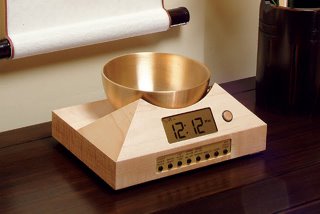 Tibetan Bowel Meditation Timers
Now & Zen – The Zen Meditation Timer and Alarm Clock Store
1638 Pearl Street
Boulder, CO 80302
(800 779-6383
Posted in intention, Meditation Timers, Meditation Tools, mindfulness practice, Well-being, yoga, Yoga Timer, Yoga Timers by Now & Zen, Zen Timers
 meditating on a rock At Harvard Medical School’s Mind-Body Medical Institute, Dr. Herbert Benson and colleagues teach a technique they call the Relaxation Response, which is a demystified system of meditation, modeled directly on Transcendental Meditation (TM), a type of yogic mantra meditation. Numerous studies have shown that when you quiet the mind with these techniques, a variety beneficial physiological responses—including reduced heart rate, breathing rate, blood pressure, and levels of stress hormones—result, benefiting conditions from migraines to high blood pressure to infertility.
adapted from Yoga Journal, Yoga Therapy and the Mind-Body Connection, Part 1 by Timothy McCall, M.D.
Use our unique “Zen Clock” which functions as a Yoga & Meditation Timer. It features a long-resonating acoustic chime that brings your meditation or yoga session to a gradual close, preserving the environment of stillness while also acting as an effective time signal. Our Yoga Timer & Clock can be programmed to chime at the end of the meditation or yoga session or periodically throughout the session as a kind of sonic yantra. The beauty and functionality of the Zen Clock/Timer makes it a meditation tool that can actually help you “make time” for meditation in your life. Bring yourself back to balance.
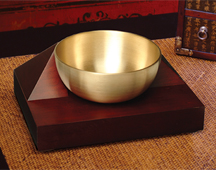 Singing Bowl Meditation Timer from Now & Zen, Inc. Now & Zen’s Singing Bowl Meditation Timer Store
1638 Pearl Street
Boulder, CO 80302
(800) 779-6383
Posted in intention, wake up alarm clock, Well-being, yoga, Zen Alarm Clock
 How to have more energy in the morning It’s often hard to find the inspiration to get out of your nice, comfortable bed when you’re still so tired. But according to Kundalini yoga, a built-in supply of energy lies dormant at the root of the spine, like a bulb that rests underground, waiting for a cue to bloom. By accessing this vitality, you’ll have the charge you need to fire up your day — without having to resort to a double latte.
“When you awaken your Kundalini energy and get it flowing up your spine,” says Maya Fiennes, a London yoga teacher and star of the DVD “Kundalini Yoga to Detox and Destress,” “you become alert and uplifted instead of sluggish and stressed.” We worked with Fiennes to develop this series of simple moves that stretch and strengthen the spine, increase vitality, reduce tension, release impurities, and improve focus — everything you need to face what lies ahead.
Camel Ride (pictured)
Targets
The lower spine.
What It Does
Releases lower-back tension, opens the hips, stimulates the digestive and immune systems, and promotes mental focus. “When you flex the spine,” says Fiennes, “you flex the mind.”
How to Do It
Sit cross-legged on the floor with your hands resting on your ankles. Bring your ribs and chest forward, gently arching your back, as you inhale. Then move the rib cage backward and round your lower spine as you exhale. Keep your neck relaxed and your chin parallel to the ground. Continue doing this exercise in unison with your breath for about two minutes, set your zen timer to repeat every 2 minutes and repeat six times.
Sufi’s Circle
Targets
The middle spine.
What It Does
Creates more space in the torso and encourages the lungs to expand; further stimulates digestion; soothes the nervous system. “The spiral is a familiar pattern in nature,” says Fiennes. “It’s very calming to move this way.”
How to Do It
Inhale and rotate your ribs forward and to the right, then exhale as you continue back and to the left, drawing a big circle with your chin and rib cage. Your spine will arch slightly and then round throughout the exercise. Rest your hands on your knees, using them for leverage. After two minutes, reverse and repeat for two more minutes.
Spinal Twist
Targets
The upper spine.
What It Does
Promotes detoxification; stimulates the lymphatic system; encourages energy to flow throughout the spine.
How to Do It
Sit with your hands on your shoulders, elbows parallel to the ground, and shoulders relaxed. As you inhale, twist your torso, shoulders, and head to the right. Exhale and twist to the left. Alternate between the right and left sides, gradually increasing your pace. After a minute, make the “okay” symbol with your fingers and begin to slowly straighten your arms with each twist until they are straight above your head. To finish, bring your hands into a prayer position and feel the energy coursing along your spine.
One of the ultimate Zen like experiences is waking-up from a great slumber refreshed and energized. Your mind and body are harmoniously one, both alert and focused. Having a refreshed mind and body are two keys to a natural and Zen lifestyle. Waking up in the morning should not be a loud and abrupt awakening, but rather it should be a peaceful positive experience. The right natural alarm clock can transition your deep and tranquil sleep into a serene start to consciousness. Imagine a long-resonating Tibetan bell-like chime waking you up to a beautiful morning experience.
The right alarm clock can be the most beneficial investment for you. With our Now & Zen natural alarm clock you are awakened more gradually and thus more naturally. Now & Zen is focused on creating a naturalistic lifestyle, and our clocks are an example of our philosophy.
adapted from Body + Soul, March 2008 by Kate Hanley
 Solid maple and walnut clocks use chimes to emulate Tibetan bells to wake you
Now & Zen’s Natural Alarm Clock Store
1638 Pearl Street
Boulder, CO 80302
(800) 779-6383
Posted in intention, mindfulness practice, Natural Awakening, sleep, wake up alarm clock, Well-being, yoga, Zen Alarm Clock
 Whether it’s yoga to reduce muscle tension, breathing to slow the heart rate, or an herbal massage to calm a racing mind, a simple routine can be the most effective and safest road to a better night’s sleep. There is growing evidence that small behavioral changes can make a big difference in getting some good shuteye. A 2006 study published in the Journal of the American Medical Association showed that participants who made modifications like reducing stimuli in the bedroom and learning relaxation techniques improved their sleep more than those who took drugs. Whether it’s yoga to reduce muscle tension, breathing to slow the heart rate, or an herbal massage to calm a racing mind, a simple routine can be the most effective and safest road to a better night’s sleep. There is growing evidence that small behavioral changes can make a big difference in getting some good shuteye. A 2006 study published in the Journal of the American Medical Association showed that participants who made modifications like reducing stimuli in the bedroom and learning relaxation techniques improved their sleep more than those who took drugs.
adapted from Yoga Journal
To find out which rituals will work best for you, it helps to understand insomnia from an Ayurvedic perspective. Yoga’s sister science and India’s oldest known system of medicine, Ayurveda is based on the idea that the life force that exists in all of us manifests as three different energies, or doshas, known as vata, pitta, and kapha. Though everyone has some of each dosha, most people tend to have an abundance of one or two.
Vata, ruled by air and ether, governs movement in the body. Pitta, ruled by fire, governs digestion and the metabolism. And kapha, ruled by earth and water, governs your physical structure and fluid balance. Ayurveda categorizes insomnia as a vata imbalance, because vata is controlled by air—and air controls the nervous system. Calming yoga and Ayurvedic rituals reduce vata in the body.
adapted from Yoga Journal, by Kelly McGonigal
Boulder, Colorado—an innovative company has taken one of life’s most unpleasant experiences (being startled awake by your alarm clock early Monday morning), and transformed it into something to actually look forward to. “The Zen Alarm Clock,” uses soothing acoustic chimes that awaken users gently and gradually, making waking up a real pleasure. Rather than an artificial recorded sound played through a speaker, the Zen Clock features an alloy chime bar similar to a wind chime. When the clock’s alarm is triggered, its chime produces a long-resonating, beautiful acoustic tone reminiscent of a temple gong. Then, as the ring tone gradually fades away, the clock remains silent until it automatically strikes again three minutes later. The frequency of the chime strikes gradually increase over ten-minutes, eventually striking every five seconds, so they are guaranteed to wake up even the heaviest sleeper. This gentle, ten-minute “progressive awakening” leaves users feeling less groggy, and even helps with dream recall.
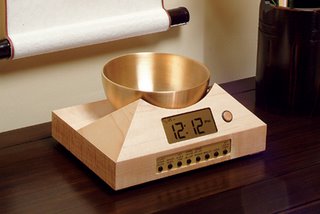 Meditation Timers and Alarm Clocks, tools for relaxation Now & Zen – The Peaceful Alarm Clock Store
1638 Pearl Street
Boulder, CO 80302
(800) 779-6383
Posted in Well-being, yoga, Yoga Timer
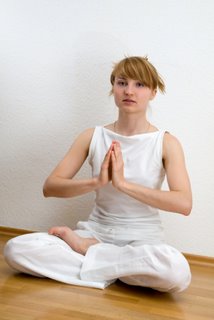 yoga Sooner or later, most of us feel a little depressed or anxious, and certainly all of us know what it’s like to feel tired. There are many different ways of treating these feelings, from exercise to meditation, from medication to a long vacation in Hawaii. But you may not realize that you have a safe, effective, and inexpensive remedy right at hand for each of these conditions. What is this magical elixir? Your own breath.
As yogis have known for centuries—and as medical science is beginning to discover—the breath has amazing recuperative powers. By controlling the breath (a practice called pranayama), the yogis found, they could alter their state of mind. The three pranayama practices described here primarily create their effects by slowing and regularizing the breath. This engages what scientists call the parasympathetic nervous system, a complex biological mechanism that calms and soothes us.
How does slower breathing help? In stressful times, we typically breathe too rapidly. This leads to a buildup of oxygen in the bloodstream and a corresponding decrease in the relative amount of carbon dioxide, which in turn upsets the ideal acid-alkaline balance—the pH level—of the blood. This condition, known as respiratory alkalosis, can result in muscle twitching, nausea, irritability, lightheadedness, confusion, and anxiety.
In contrast, slowing the breath raises the carbon dioxide level in the blood, which nudges the pH level back to a less alkaline state. As the blood’s pH changes, the parasympathetic nervous system calms us in a variety of ways, including telling the vagus nerve to secrete acetylcholine, a substance that lowers the heart rate.
Know Your Breath
Now please note that I’m not recommending that you try to breathe away chronic anxiety, fatigue, or depression. None of these conditions is easily or safely self-treated. In fact, tackling them by yourself, without professional supervision, could make them worse. But your breath can be a powerful ally in coping with temporary physical and emotional states—whether you’re despondent about an argument with a close friend, apprehensive about an upcoming job interview, or exhausted after a tough day at work.
 Use Your Chime Timer to Breathe Away Anxiety - Eisen Keisai, Woman Getting out of a Mosquito Net As with any treatment, the breathing remedy must be administered intelligently and judiciously to be fully effective. Each condition responds best to its own special breath. To calm anxiety, for example, you can purposely lengthen your exhalations; to alleviate dullness and fatigue, you can lengthen your inhalations. And to lift yourself out of an emotional pit, it’s most effective to equalize the lengths of your inhalations and exhalations.
If you want your breath to work as an extra-strength remedy, it’s a good idea to do some preliminary practice before you try to apply these techniques. First, spend some time with your breath when you’re feeling in the pink, learning to closely watch its movements and tendencies.
When you first try to look at your breath, the experience may feel akin to that of a fish attempting to describe water. Your breathing is so habitual that you’ve probably never given it much attention, and therefore you have little sense of the subtle and not-so-subtle ways it can change. But if you continue to watch, you will probably begin to notice many different dimensions, physical and emotional, to the feeling of your breath.
“The Zen Alarm Clock & Chime Timer’, uses soothing acoustic chimes that signal it’s time – gently and gradually.
Rather than an artificial recorded sound played through a speaker, the Zen Clock features an alloy chime bar similar to a wind chime. When the clock’s alarm is triggered, its chime produces a long-resonating, beautiful acoustic tone reminiscent of a temple gong.
adapted from Yoga Journal by Richard Rosen
 Bamboo Zen Meditation and Yoga Timer Now & Zen’s Chime Timer Store
1638 Pearl Street
Boulder, CO 80302
(800) 779-6383
Posted in Well-being, yoga, Yoga Timer, Yoga Timers by Now & Zen
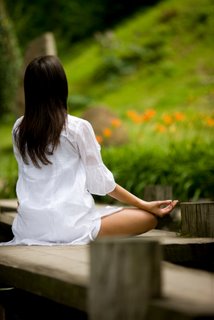 meditation New research shows that meditation can help you improve your ability to concentrate in two ways. First, it can make you better at focusing on something specific while ignoring distractions. Second, it can make you more capable of noticing what is happening around you, giving you a fuller perspective on the present moment.
Some of the most fascinating research on how meditation affects attention is being conducted by Antoine Lutz, PhD, an associate scientist at the Waisman Laboratory for Brain Imaging and Behavior at the University of Wisconsin at Madison, in collaboration with Richard Davidson and the Laboratory for Affective Neuroscience at the University of Wisconsin. Their work has shown that concentration meditation, in which the meditator focuses complete attention on one thing, such as counting the breath or gazing at an object, activates regions of the brain that are critical for controlling attention. This is true even among novice meditators who receive only brief training. Experienced meditators show even stronger activation in these regions. This you would expect, if meditation trains the brain to pay attention. But extremely experienced meditators (who have more than 44,000 hours of meditation practice) show less activation in these regions, even though their performance on attention tasks is better. The explanation for this, in Lutz’s view, is that the meditation training can eventually help reduce the effort it takes to focus your attention. “This would be consistent with traditional accounts of progress in meditation practice. Sustaining focus becomes effortless,” Lutz says. This suggests that people can immediately enhance concentration by learning a simple meditation technique, and that practice creates even more progress.
adapted from Yoga Journal by Kelly McGonigal
Although meditation can be done in almost any context, practitioners usually employ a quiet, tranquil space, a meditation cushion or bench, and some kind of timing device to time the meditation session. Ideally, the more these accoutrements can be integrated the better. Thus, it is conducive to a satisfying meditation practice to have a timer or clock that is tranquil and beautiful. Using a kitchen timer or beeper watch is less than ideal. And it was with these considerations in mind that we designed our digital Zen Alarm Clock and practice timer. This unique “Zen Clock” features a long-resonating acoustic chime that brings the meditation session to a gradual close, preserving the environment of stillness while also acting as an effective time signal.
 Zen Timer for Yoga and Meditation Now & Zen – The Zen Meditation Timer & Clock Store
1638 Pearl Street
Boulder, CO 80302
(800) 779-6383
Posted in yoga, Yoga Timer, Yoga Timers by Now & Zen
« Previous Entries
Next Page »
|
|
|
|